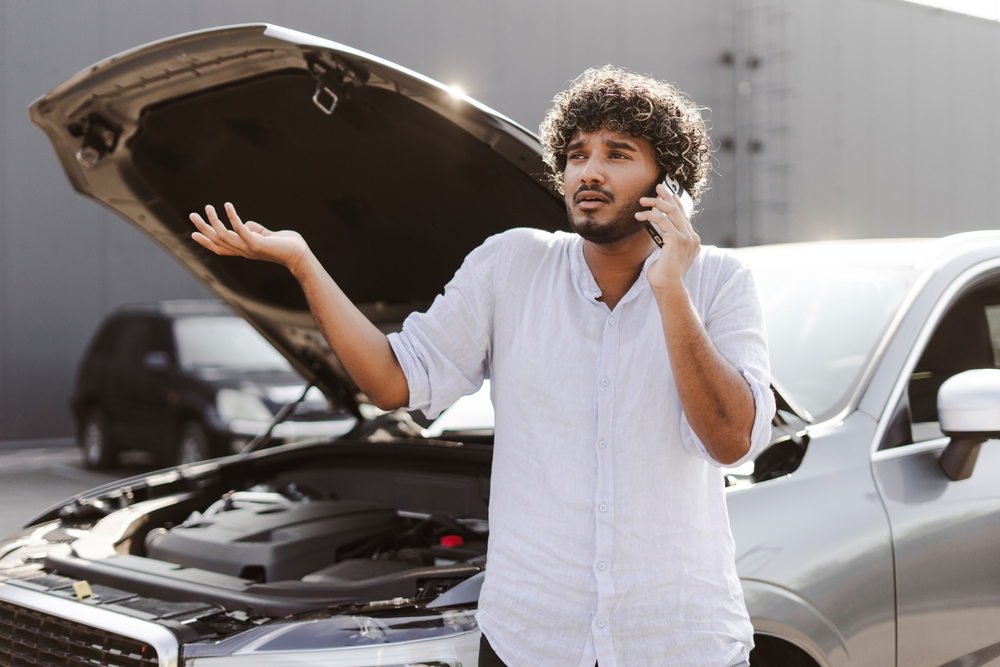
As a former mechanic, I know there are some things that simply stop working on your car sometimes. And there’s never a good time for it to happen. Now, modern cars promise convenience, safety, and peace of mind, but there are so many more things that can go wrong. Ultimately, it can make your life a little harder. That said, a lot of these newer features fail without much of a warning. This could leave you stranded, strapped for cash, or worse, unsafe. Here are seven car features that seem to be the biggest culprits and how you can save yourself from being caught off-guard.
1. The Key Fob Battery Dies During a Rainstorm
It’s pouring, your arms are full of groceries, and suddenly your car won’t unlock. The likely culprit? A dead key fob battery. This small but essential component controls access, ignition, and alarm systems in most modern vehicles. When it dies, you’re left fumbling for the manual key… if your model even has one. Replacing the fob battery every two years or so and keeping a spare battery in your glove box can prevent this all-too-common car feature failure.
2. The Backup Camera Freezes When You’re Parallel Parking
Few things are more stressful than backing into a tight space on a busy street, especially when your backup camera suddenly freezes. Many drivers don’t realize that these cameras rely on small sensors vulnerable to dirt, water, or electrical glitches. When the screen goes black, you lose your depth perception and confidence in seconds. While you can still rely on mirrors, that temporary blind spot can make even the most seasoned driver anxious. Regularly cleaning the camera lens and checking wiring during maintenance can keep this lifesaving feature working reliably.
3. Power Windows Stop Responding in the Drive-Thru
You pull up to the drive-thru, ready to order, only to discover your window won’t budge. Whether it’s a dead motor, a blown fuse, or a jammed switch, it always seems to happen when there’s a long line behind you. Rolling down the door manually isn’t an option in modern cars, making the experience both awkward and inconvenient. Moisture, dirt, and age are the main culprits behind window motor failures. To avoid it, use your power windows regularly to keep the system from seizing up over time.
4. The Air Conditioning Fails on the Hottest Day of the Year
There’s never a “good” time for your car’s A/C to fail, but somehow, it always happens on the most sweltering day imaginable. When the compressor or refrigerant system fails, you’re left sweating through traffic or delaying trips altogether. Older vehicles and neglected systems are particularly prone to this breakdown. Beyond comfort, a lack of A/C can also lead to driver fatigue and reduced concentration. Regular servicing every spring keeps your air conditioning running efficiently when the summer heat strikes hardest.
5. Windshield Wipers Quit Mid-Storm
Few car feature failures feel more dangerous than losing visibility in heavy rain. When windshield wipers fail, whether due to a broken motor, worn blades, or an electrical fault, it can turn a simple drive into a terrifying ordeal. Ironically, wiper problems often reveal themselves only during bad weather, when it’s too late to replace them. Streaking, skipping, or squeaking are early signs your wipers are on their way out. Changing blades twice a year and checking the motor fuse ensures clear vision when it matters most.
6. The Check Engine Light Appears on a Road Trip
You’ve finally escaped town for a long weekend, and then the dreaded check engine light flickers on. This warning can signal anything from a loose gas cap to a serious engine malfunction. Because the light alone doesn’t specify the issue, it can ruin your peace of mind and your plans. Many drivers ignore it, only to face costlier repairs later. Carrying a portable OBD-II scanner can help diagnose problems quickly, giving you clarity on whether to keep driving or call for help.
7. The Battery Dies Right Before Work
Car batteries have a cruel sense of timing. They tend to die when you’re already running late. Extreme weather, short trips, and old age can all shorten battery life without warning. You might notice dim lights or slow cranking before complete failure, but often, it just quits overnight. This sudden death can leave you stranded and frustrated, especially if your car’s electronics drain power unnoticed. Testing your battery twice a year and replacing it every three to five years helps avoid early-morning surprises.
Beating the Breakdown Before It Beats You
Every car feature, from wipers to cameras, plays a crucial role in safety and comfort, but even the best-designed systems have weak points. The key to avoiding sudden failure is proactive maintenance: replacing worn parts, checking connections, and listening to early warning signs. Most breakdowns give subtle clues before disaster strikes; it’s just a matter of noticing them. A little attention today can spare you a lot of frustration tomorrow. After all, the best drivers aren’t just skilled; they’re prepared.
Have you ever had a car feature fail at the worst possible moment? Share your story, and your quick fixes, in the comments below!
What to Read Next
- 6 Car Features That Sound Safe but Actually Put You at Risk
- The Car Features Dealers Push That Mechanics Always Warn Against
- 7 Car Features That Make You More Likely to Get Pulled Over
- Why These 5 Car Features Are Being Quietly Removed in New Models
- What’s Actually Inside That “Noise-Reducing” Car Feature?
The post 7 Car Features That Stop Working at the Worst Possible Time appeared first on Clever Dude Personal Finance & Money.







